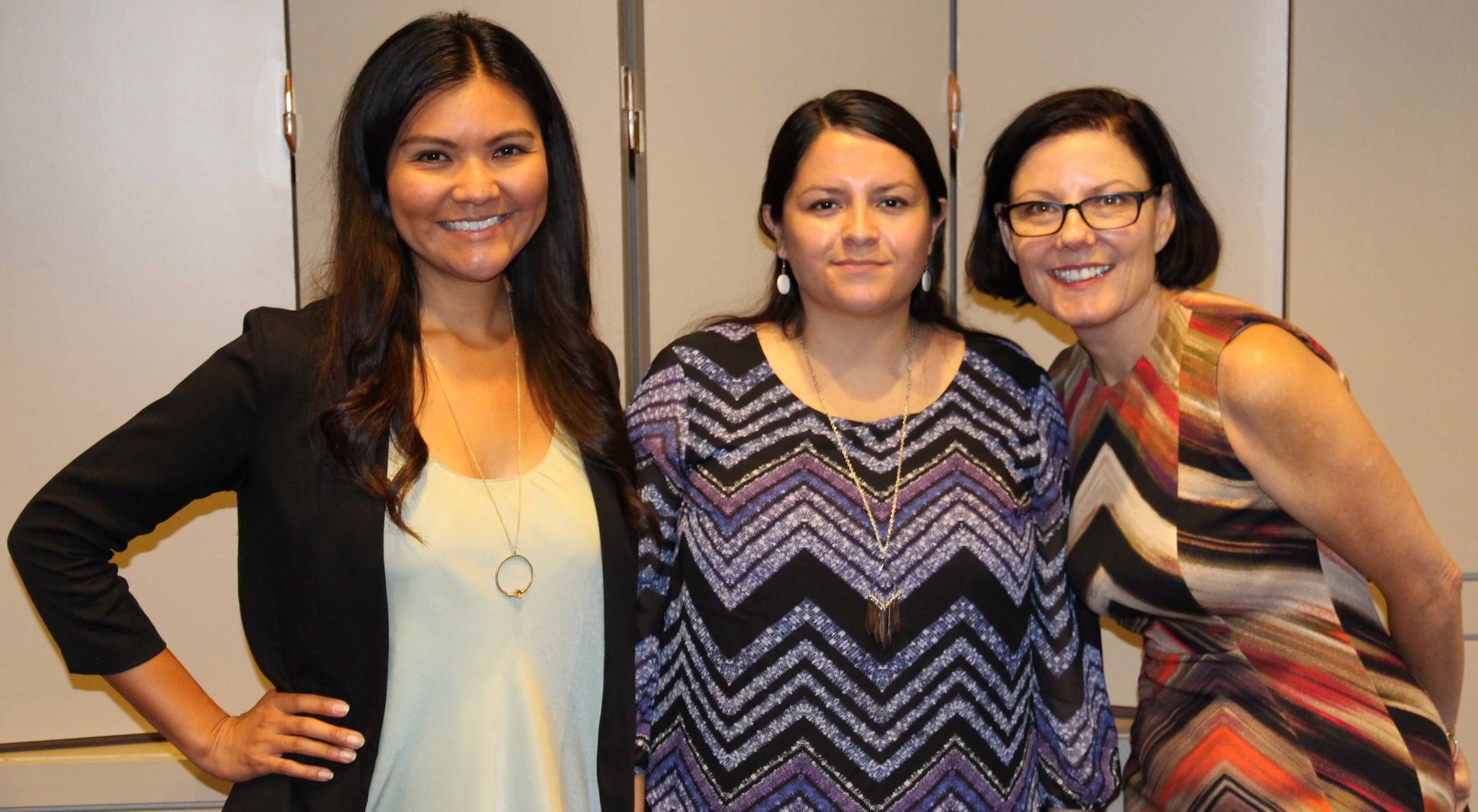Journalist Resources
Covering Domestic Violence Against Native Women

- 2016 Excellence in Journalism Conference (EIJ16) Session Information: Covering Domestic Violence Against Native Women. Native women suffer from violence at a rate two and a half times greater than that of any other population in the United States. One in three Native women will be raped in her lifetime; four in five will be victims of a violent assault. Join the National Indigenous Women’s Resource Center (NIWRC) and a panel of Native journalists covering domestic violence for a discussion on the legal and ethical ramifications for journalists covering this topic. Includes: shared practices, common challenges and perspectives on why it’s important for both Native and non-Native media to report on this topic (for example: non-Native offenders commit an estimated 88% of these crimes). Learn how restoring safety to Native women and children upholds the sovereignty of Indian and Alaska Native tribes by delving into the Violence Against Women Act (VAWA) and how VAWA is applied in actual cases from tribal courts to the US Supreme Court. This program provides resources to aid in covering dv issues in your community, information on tackling legal jargon for the general public and space to share your experience covering sensitive tribal specific issues.
- Presenters for Session: Princella RedCorn, NIWRC Communications Officer (@15Princella), Suzette Brewer: is a writer specializing in federal Indian law and social justice issues, having written extensively on the Indian Child Welfare Act and the Supreme Court for Indian Country Today Media Network. She has written for The Dallas Morning News, The Denver Post, the Denver Business Journal, and many others. Previously, she also served as public affairs officer for the Smithsonian's National Museum of the American Indian, and as communications director for the National Indian Gaming Association and the American Indian College Fund. Her published books include Real Indians: Portraits of Contemporary Native Americans and America's Tribal Colleges; Sovereign: An Oral History of Indian Gaming in America. She is the 2015 recipient of the Richard LaCourse-Gannett Foundation Al Neuharth Investigative Journalism Award for her work on the Indian Child Welfare Act. She is a member of the Cherokee Nation and is from Stilwell, Oklahoma (@suzette_brewer), Mallory Black, Indpendent Journalist, Mallory Black, an enrolled member of the Navajo Nation, is an independent journalist based out of San Diego, California, where she is also the Communications Specialist for the San Diego State University Division of Student Affairs. Her stories on Native American communities in the areas of health, culture and law — including the Violence Against Women Act, the Indian Child Welfare Act, and the Healthy Diné Nation Act — have been published by the Native Health News Alliance, Native Peoples Magazine and through the American Heart Association’s Voices for Healthy Kids Initiative. A former intern for WBEZ-Chicago Public Radio and the Salt Lake County Division of Youth Services, Mallory holds a master’s degree in journalism from Northwestern University and a bachelor’s degree in communication and minor in peace and justice studies from Utah Valley University. A member of the Native American Journalists Association and the Society of Professional Journalists, Mallory is also a former National Press Foundation fellow.
- VIEW: Photographs from session
- READ: PowerPoint from session (See above for download)
- LISTEN: Audio of presenters during the session (See above for download)
- Restoration Magazine (Quarterly magazine with updates on policy to grassroots organizations on Violence Against Native Women). Free PDF digital download. Paid subscriptions for hard copies.
- Advocate! Beyond the Shelter Doors e-Newsletter. Quarterly publication
- Sign up on NIWRC General Annoucement mailing list
- NIWRC Facebook
- NIWRC Twitter
Example of mainstream media breaking down the tribal jurisdiction issue and relating it to broader issues of race and the general election: Indian Bummer | Full Frontal with Samantha Bee | TBS
Recommendations and tips for reporters:
1) Triple-check data and statistics cited to present an accurate picture and extent of domestic violence in Indian Country.
2) Ask sources to elaborate if you aren't sure of the meaning behind legal jargon or a decision and its implications. If you don't know, chances are the reader won't either. Spell it out.
3) Lookout for opportunities to tell "solutions-oriented" stories, not just rely on statistics or the doom and gloom. Where are the signs of progress?
4) For non-Native reporters, don't be shy in reaching out to organizations like the NIWRC, NAJA or NCAI for connections to tribal leaders or other key policy players when covering domestic violence.
Topics related to violence against Native women:
Sports: The Washington Football Team’s Name Feeds Into Violence Against Native Women
Arts and Culture: Native American domestic violence survivors take to stage to share stories
Health: Study suggests link between domestic violence and obesity in Native children
Examples of solutions-oriented journalism:
Advocates’ hopes high for domestic violence hotline for Native women
Father-son Navajo Indians draw on violent pasts to teach healing
Resources for reporters covering domestic violence:
National Indigenous Women's Resource Center
Indian Law Resource Center: Ending Violence Against Native Women
Department of Justice, Office of Violence Against Women: Task Force on Violence Against American Indian and Alaska Native Women
National Institutes of Justice: Violence Against AIAN Women Research
CDC: National Intimate Partner and Sexual Violence Survey
National Congress of American Indians: Violence Against Women
Columbia Dart Center for Journalism and Trauma: Intimate Partner Violence
USC Annenberg Center for Health Journalism: Domestic Violence - A Public Health Problem and Watch Your Language
Washington Coalition of Sexual Assault Programs: Considerations for the Native American community





